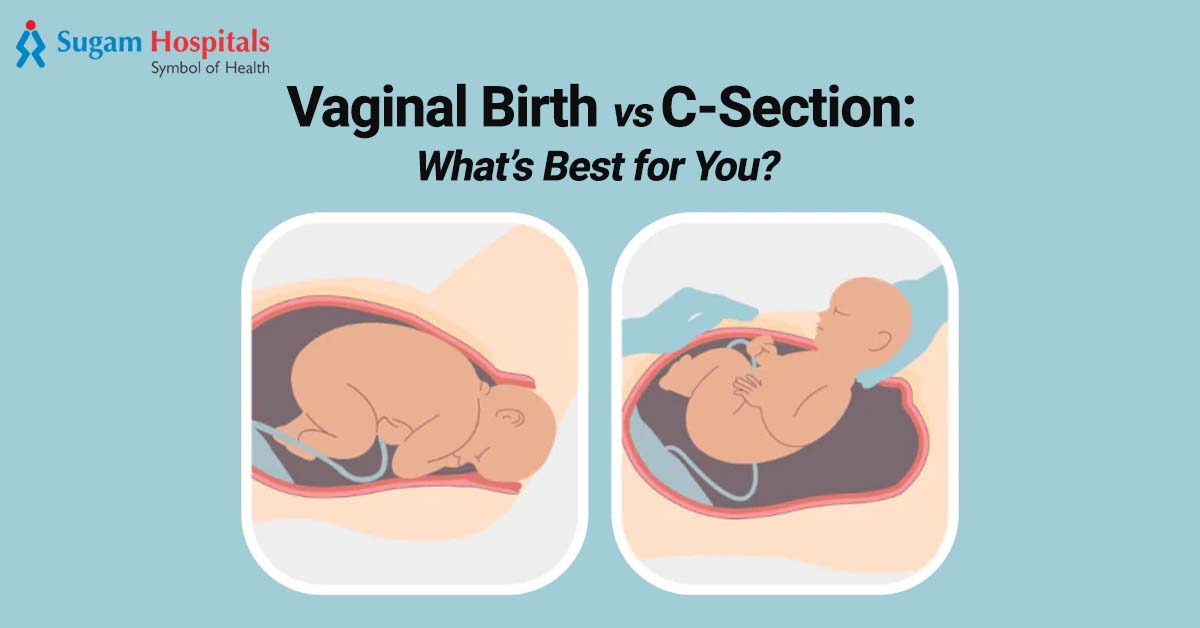Vaginal Birth vs C-Section: What’s Best for You?

Vaginal Birth vs C-Section: What’s Best for You?
August 13, 2025 by adminMaking an informed choice about how to deliver your new baby is one of the most important decisions an expectant mother will ever have to make. There are two modes of delivery, vaginal delivery and cesarean delivery (C-section) and each method has its advantages and disadvantages.
Learning more about these procedures will help equip you to make the best decision for your health needs and personal preferences if the situation is in your hands .
Vaginal Birth: The Natural Approach
Vaginal delivery is a more common and traditional form of labor and delivery. In vaginal delivery, a person is in active labor and the baby is delivered from the mother’s uterus down its birth canal, aided by contractions and the mother’s effort.
One major advantage of a vaginal birth is a shorter time for recovery in the hospital. Typically, mothers have less surgery-related pain and moving post-operatively occurs sooner. Many mothers can also more easily obtain early skin-to-skin contact and breastfeeding, which is important for bonding and the newborn’s health.
Vaginal birth also aids with getting fluid out of the baby’s lungs for breathing air while providing the baby with a natural means to stretch its lungs by squeezing tightly against the birth canal. This is thought to be an important, natural process in decreasing respiratory distress for a newborn baby.
Lastly, vaginal delivery comes with its own challenges, including uncertainty in the timing and potential for lengthy labor, tear and subsequent episiotomy or assisted delivery with forceps or suction. Additionally, many women face some medical conditions or pregnancy complications that make vaginal delivery risky.
C-Section: A Surgical Alternative
Childbirth can occur via a surgical procedure called a cesarean section (C-section), which is performed by incisions through the mother’s abdomen and uterus. Cesarean sections can be performed electively or as an emergency procedure when childbirth becomes complicated.
One of the significant benefits of a planned C-section is control. Knowing the delivery date could relieve some families’ anxiety. C-sections will also be the safest option in some medical conditions, including placenta previa, fetal distress and breech presentation.
Usually, recovery from a C-section will take longer than from a vaginal birth because there is surgery involved. Women may also experience more postoperative pain and their hospital stay will be longer. There are even surgical risks, including infections, development of blood clots and future pregnancies may be complicated.
On the newborn side, C-section babies are at a very slightly increased risk for breathing problems at first since they do not get to go through the same fluid-clearing process that a vaginally-delivered baby does.
Factors Influencing the Best Choice
Choosing between vaginal delivery and a Cesarean delivery usually involves several personal and medical factors. Your obstetrician will consider your past medical history, the baby’s position, the gestational age and any complications that you may have had in the pregnancy.
Some women may consider a vaginal delivery after a previous Cesarean (VBAC) delivery but this depends on the type of uterine incision and many other factors. Most women will have a planned Cesarean delivery, but the scheduling is based on medical and personal reasons. You may consult or talk to your healthcare provider about what is considered an elective Cesarean delivery but should be considered carefully.
Making an Informed Decision
It is important to have honest and open communication with your gynecologist. When you can assess the benefits, risks and potential consequences of vaginal birth versus C-section, you can make informed choices that reflect your health and comfort.
When you are informed about your options, you will also feel confident knowing that you have dealt with the various contingency plans you can consider. That includes planning in advance for labor and delivery, pain management options and red flags for labor and delivery complications.
Conclusion
Women experience the birth of their child in two ways, vaginally and by C-section. Both are safe methods if properly indicated and appropriately managed. Each will have individual matters to consider and what may be the best mode of delivery for one mother may not apply to another.
If you seek customized assistance and skilled support, seeking the advice of a reputable gynecologist specialist in Chennai you can discuss the delivery choices that are best tailored to your pregnancy.
At Sugam Hospital, we work with you every step of the way to ensure a safe and positive birth experience.

